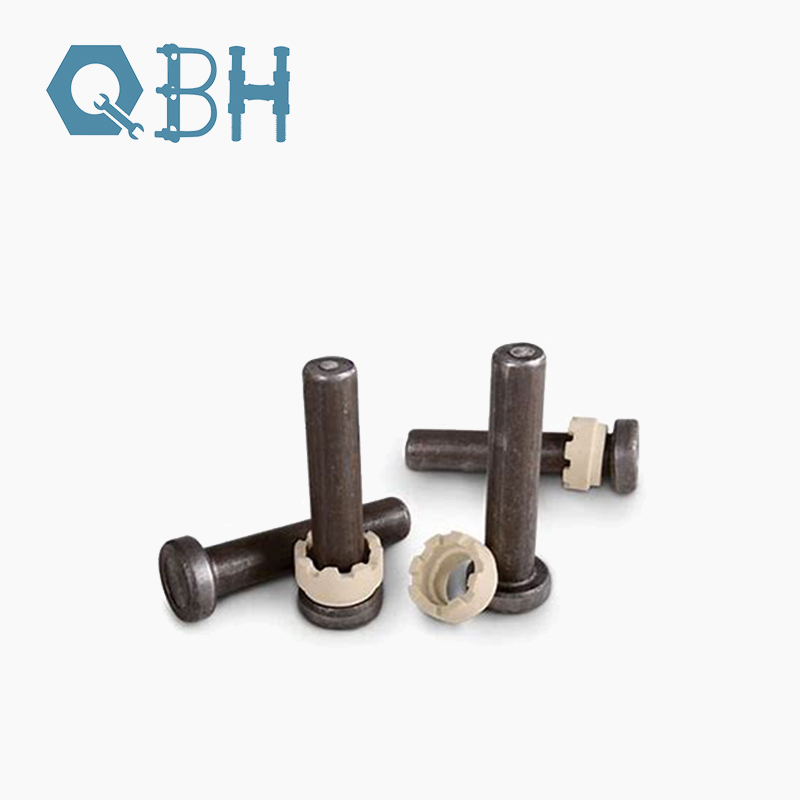What Are Shear Studs ?
2025-09-04
In modern construction and civil engineering, structural stability and safety are paramount. One of the most effective solutions used in steel-concrete composite structures is the shear stud. Designed to enhance load transfer and improve bonding between steel beams and concrete slabs, shear studs have become an integral part of high-rise buildings, bridges, industrial complexes, and other large-scale infrastructure projects.
What Are Shear Studs and Why Are They Essential?
Shear studs, also known as headed shear connectors, are specialized fasteners welded to the top flange of steel beams in composite construction. Their primary function is to transfer horizontal shear forces between steel and concrete, enabling the two materials to act together as a single, stronger unit.
In the absence of shear studs, concrete slabs and steel beams behave independently under load, which can significantly reduce structural capacity and lead to potential performance failures. By locking the two materials together, shear studs:
-
Improve load distribution — Ensure that concrete and steel share forces efficiently.
-
Enhance structural rigidity — Reduce deflection under heavy loads.
-
Prevent slippage — Eliminate the risk of separation between concrete slabs and steel beams.
-
Increase construction efficiency — Simplify the design of composite beams and decks.
Key Applications of Shear Studs
-
High-rise office buildings and residential towers
-
Highway and railway bridges
-
Industrial plants and warehouses
-
Marine and offshore structures
-
Infrastructure requiring composite deck systems
For projects where both strength and durability are non-negotiable, shear studs are indispensable components.
How Do Shear Studs Work in Composite Structures?
To understand the role of shear studs, we need to look at the mechanics of composite action. In a steel-concrete composite structure, steel beams handle tensile forces while concrete slabs resist compressive forces. However, without proper connectors, these forces are not transferred efficiently between the two materials.
Shear studs create a mechanical interlock between steel and concrete:
-
Welding Process
Shear studs are typically welded onto the top flange of steel beams using stud welding machines. The welding ensures a strong bond capable of withstanding heavy loads and vibrations. -
Concrete Encapsulation
After welding, concrete is poured over the steel beams, encapsulating the shear studs. As the concrete hardens, it locks the studs in place, forming a rigid connection between the slab and the beam. -
Force Transfer
When loads are applied, shear forces develop at the interface of steel and concrete. The shear studs transfer these forces, ensuring both materials work together effectively.
Benefits of Effective Shear Connection
-
Higher load-bearing capacity
-
Reduced material consumption due to optimized composite action
-
Increased durability and stability under dynamic and seismic conditions
-
Cost savings in long-term maintenance
Technical Specifications and Product Parameters
Selecting the right shear studs requires understanding their technical parameters, which directly influence their performance in construction. Below is a detailed specification table for typical shear studs:
| Parameter | Specification | Details |
|---|---|---|
| Material | Carbon Steel (Grade Q235 or Q345) | High tensile and shear strength |
| Diameter | 13 mm – 25 mm | Custom sizes available |
| Length | 40 mm – 200 mm | Based on beam and slab thickness |
| Surface Finish | Plain or Galvanized | Corrosion resistance options |
| Welding Method | Arc Stud Welding | Ensures consistent bonding |
| Tensile Strength | ≥ 450 MPa | Suitable for high-load environments |
| Shear Strength | ≥ 270 MPa | Prevents structural slippage |
| Standards | ISO 13918 / AWS D1.1 / EN ISO 14555 | International compliance |
Quality Considerations
-
Material certification ensures consistent performance.
-
Weld integrity tests guarantee secure attachment to steel beams.
-
Dimensional accuracy ensures compatibility with project specifications.
Using certified and precisely manufactured shear studs ensures long-lasting structural integrity and compliance with global construction standards.
Installation Process and Best Practices
Proper installation is crucial to maximize the efficiency and strength of shear studs. Below are the recommended steps:
Preparation
-
Inspect steel beams for flatness and cleanliness.
-
Remove rust, paint, or oil that may affect welding quality.
Stud Welding
-
Use a stud welding machine for precision.
-
Position the stud perpendicular to the beam flange.
-
Ensure consistent welding parameters: voltage, current, and time.
Quality Inspection
-
Conduct visual inspections for welding defects.
-
Perform bend tests to verify stud strength.
Step 4: Concrete Pouring
-
Pour concrete carefully to encapsulate the shear studs.
-
Vibrate the concrete properly to avoid air pockets.
Final Structural Check
-
Inspect composite action after curing.
-
Verify that the steel-concrete bond meets design specifications.
Following these best practices reduces the likelihood of construction delays, structural defects, and maintenance issues.
Frequently Asked Questions (FAQs)
Q1: What is the standard size of shear studs used in composite construction?
A: The most commonly used diameters are 13 mm, 16 mm, 19 mm, and 22 mm, with lengths ranging from 50 mm to 200 mm depending on the concrete slab thickness and load requirements. However, sizes can be customized based on project specifications.
Q2: How do I ensure proper welding quality for shear studs?
A: High-quality welding depends on three main factors:
-
Using a certified stud welding machine calibrated for the stud size.
-
Maintaining a clean, flat surface on the steel flange.
-
Performing bend and pull-out tests to confirm stud integrity before pouring concrete.
Shear studs are a critical component in modern composite construction, ensuring optimal load transfer between steel beams and concrete slabs. By improving structural integrity, reducing material consumption, and enabling faster construction timelines, they have become indispensable in high-rise buildings, bridges, and industrial facilities.
At QBH, we manufacture high-quality shear studs that meet international standards like ISO 13918 and AWS D1.1. Our products are engineered for superior strength, precise dimensions, and reliable weldability, making them suitable for even the most demanding projects.
If you’re planning a construction project and need durable, certified shear studs, contact us today to discuss your requirements and receive expert support.



